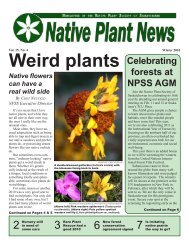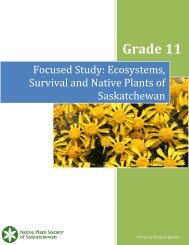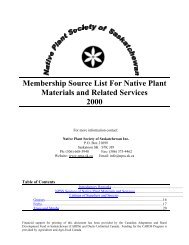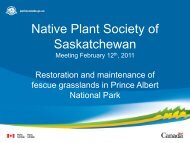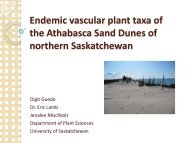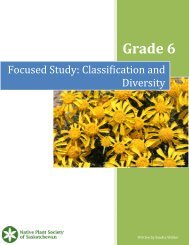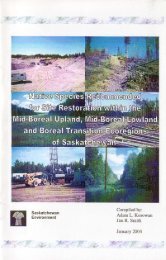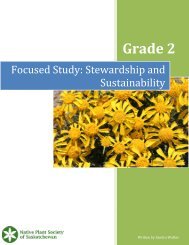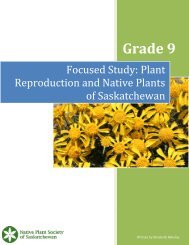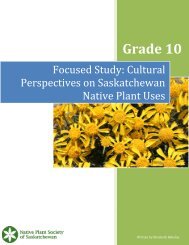Native Plants As Habitat For Wildlife - Native Plant Society of ...
Native Plants As Habitat For Wildlife - Native Plant Society of ...
Native Plants As Habitat For Wildlife - Native Plant Society of ...
You also want an ePaper? Increase the reach of your titles
YUMPU automatically turns print PDFs into web optimized ePapers that Google loves.
maintenance <strong>of</strong> a wide array <strong>of</strong> ecological services. The maintenance <strong>of</strong> hydrological<br />
cycles (groundwater recharge, watershed protection, and buffering against extreme<br />
events), climate regulation, soil production and fertility, protection from erosion, nutrient<br />
storage and cycling, and pollutant breakdown and absorption are some <strong>of</strong> these services.<br />
They are fundamental to the quality <strong>of</strong> our life and our economy, and they are <strong>of</strong>ten<br />
grossly undervalued by society.<br />
Threats to Biodiversity<br />
The amazing variety <strong>of</strong> living things that are the foundation <strong>of</strong> life is disappearing. Past<br />
and current practices including habitat destruction and fragmentation, pollution, and over<br />
harvesting have disturbed ecosystems and ecosystem services. Human activity has been<br />
changing ecosystems for thousands <strong>of</strong> years but, in Saskatchewan the pace and extent <strong>of</strong><br />
change has increased since European settlement about 150 years ago. The principle<br />
threats to the province’s land and aquatic biodiversity can be summarized under five<br />
main headings including habitat loss and fragmentation, non-native species invasion,<br />
pesticides and pollution, over-harvesting.<br />
<strong>For</strong> example agricultural soils are being lost either through erosion or agricultural<br />
practices that are unsustainable. Drainage <strong>of</strong> wetlands has resulted in the loss <strong>of</strong> native<br />
aquatic systems and other drainage has left communities vulnerable to flooding. Invasive<br />
species including Dutch elm disease, leafy spurge and purple loose strife cause damage to<br />
agricultural and natural systems and negatively affect populations <strong>of</strong> native species.<br />
Chemical by-products from human activities are damaging the ozone layer and are<br />
responsible for global warming.<br />
What Can We Do<br />
The complexity <strong>of</strong> the threats to biodiversity call for a wide range <strong>of</strong> responses across a<br />
large number <strong>of</strong> private and public sectors.<br />
Global Initiative: United Nations Convention<br />
The world wide impact <strong>of</strong> the decline <strong>of</strong> biological resources inspired the global<br />
community to successfully negotiate the United Nations Convention on Biological<br />
Diversity in 1992. The Convention on Biological Diversity was signed by Canada at the<br />
June 1992 Earth Summit in Brazil and ratified in December 1992. Canada was the first<br />
industrialized country to ratify the Convention on Biological Diversity<br />
National Initiative: Canadian Biodiversity Strategy<br />
Canada’s primary response to the Convention on Biological Diversity has been the<br />
development <strong>of</strong> the Canadian Biodiversity Strategy. The strategy is an important first<br />
step in providing a national framework for jurisdictional and sectoral planning and<br />
reporting. The completed strategy was released in November, 1995 and received<br />
Ministerial endorsement from all jurisdictions in April, 1996. All federal, provincial and<br />
territorial governments are now committed to its five goals.<br />
3



